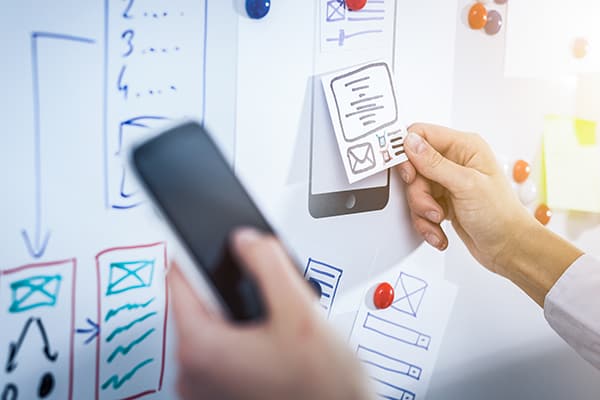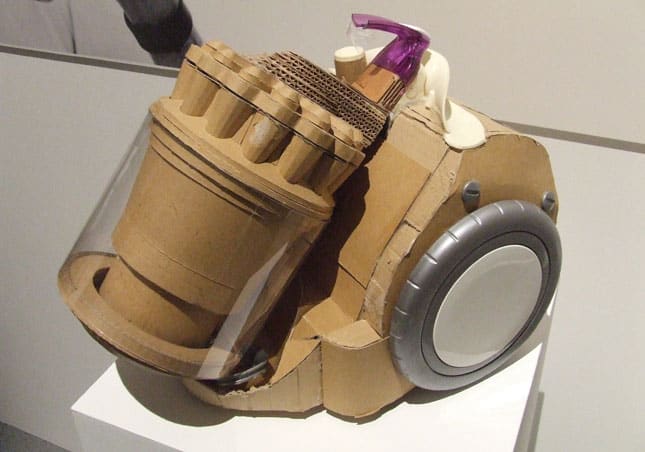How To Stay Competitive Through Powerful Prototyping.
Reality check: Ideas are only as good as your ability to execute them. (It’s one reason the design thinking process, for example, doesn’t grind to a stop at ideation.) Enter the prototype. Prototyping helps bring ideas to life, translating them from ghosts occupying the space between our ears to physical artifacts experienced in the flesh. Prototypes are versatile artifacts and can take many forms: from low-fidelity sketches, storyboards on paper, or primitive scale models made of cardboard; to advanced digital interfaces and almost-the-real-thing, full-scale models with movable parts. They can even be experiential; for instance, skits used to actualize different user scenarios. Which flavor of a prototype is the right one? It depends on the team, the project, and the stage you’re at within the creation process. It also depends on who’s involved.
While prototypes are typically considered a design and engineering tool, those team members aren’t the only ones who can get a lot from prototyping. Its interactivity, by nature, can open up conversations between all sorts of project players: designers, engineers, executives, project managers and end-users alike — helping enhance collaboration, sort out logistics, and even get faster approvals. The key to getting the most out of your team’s prototype experience is to choose wisely, tailoring your approach depending on which stakeholders you’re trying to engage and what you’re trying to accomplish.
Here are some tips.
For Project Managers
Keep the team on track.
In many cases, the most important (and underrated) prototype benefit lies in using it as a communication tool — and excellent communication is priority one for project managers charged with keeping things on track. Prototypes help project managers get a current pulse on project design and help them know where their team is in the development process so they can tie the two together and help keep things moving. Prototyping’s visual attributes can also help guide discussions among team members. Project managers can use them as a tool to facilitate collaboration efforts and answer outstanding questions. They can sometimes even help bring to light issues and requirements that people may not have considered yet — especially early on when you’re working with low-fidelity prototypes.
For End-Users
Analyze behaviors and experiences in context.
Beyond iterating on specific interactions with your design team or running usability tests on particular concepts, prototypes can also help with teasing apart high-level behaviors in context with end-users. Bringing prototyping kits out into field research is an opportunity to
get a set of users involved in the design process by thinking more deeply about some of their interactions with a product or service.
Low- and mid-fidelity behavioral prototypes are best in these cases; anything that’s too high-fidelity tends to elicit feedback that’s focused on minute details rather than high-level needs. Simple wins the day: for a mobile app project, you might guide participants through a paper prototyping exercise. If you’re working on developing a physical product, you might bring 3-D printed models covered in Velcro along, complete with buttons and screens that users can apply to illustrate pain points. These artifacts can lead discussions around specific use cases, and often reveal essential details and user behavioral patterns that might otherwise go unnoticed.
For Executives
Get decision-makers invested.
A PowerPoint presentation just doesn’t convey an idea the way a tactile 3-D model or a clickable, interactive digital product can. Using a physical or digital artifact can help executives and non-creative-side employees better understand your work and envision the final product — grounding discussions and making conversations with these stakeholders significantly more comfortable and productive. Getting them actively involved can also help them think through the minutiae of design as well, which allows you to unlock their perspective in defining constraints and establishing priorities.
Another prototyping plus when it comes to the C-level? Building empathy and getting execs to put themselves in users’ shoes is much easier when you can literally walk them through the motions. Physically acting out use cases — with a prototype artifact or not — can quickly reveal contextual details that weren’t considered before. Some projects might even warrant building out high-fidelity interactive setups. For example, you might place new store display concepts in a 3-D virtual environment or build out room-scale walk-through experience prototypes. It doesn’t have to be dramatic though. In most cases, simply holding a physical form model prototype or clicking through an interactive interface is enough to help decision-makers think from a user’s perspective. Your benefit: faster buy-in.
As you can see, prototyping can serve different needs for different types of people. At its core, it’s all about making things real so you can be more efficiently iterative, allowing people to turn things over (in their hands or minds), experiment, explore different ideas, and generate a foundation for discussion. In this way, more extensive use of prototyping lets you steer clear of the flat and static, alleviating misunderstandings that diminish the quality of feedback and inhibit decision-making.
So prototype early, test often, and iterate quickly. That’s our best three-point philosophy on how to execute on great ideas, make them tangible and, ultimately, impactful.







